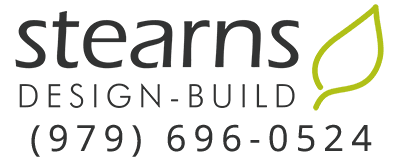
Remodeled home in Bryan / College Station, by Stearns Design Build
RISK 5: PESTICIDES
No one likes pests in their home, and rightly so. Our homes, after all, are our sanctuaries. But it’s important to be aware that the sprays we buy to kill fleas, ants, flies, and other insect pests, can also be potentially harmful to us. When aerosol sprays settle, particles become part of the dust in our home that can be inhaled or accidentally ingested. Repeated exposure can be especially harmful to children. But, careful use of these products can rid your home of annoying pests without side effects to your family’s health.
Before purchasing any pesticide, be sure to carefully read the label. There, you can learn about how to properly use and dispose of the product, as well as what pests it kills and how harmful it is to you. One of the following words will appear on the label: Caution, Warning, or Danger. Caution means it is least harmful to you, and Danger means it is most harmful. Select the pesticide that will kill or deter your pests while being least toxic.
After you use your pesticide, wash any surfaces that might have pesticide residue on them (like counter tops) before placing food on them. Also wash your hands and clothes items that were exposed to pesticides. And of course, always dispose of pesticide as directed on the container– never down a sink, or sewer drain. The best way to do dispose of a pesticide is to appropriately use it.
RISK 6: VOLATILE ORGANIC COMPOUNDS
VOCs are chemicals within household products and furnishings that become gaseous at room temperature. A few examples of products that emit these gases include, paint, cleaning supplies, disinfectants, air fresheners, pesticides, cosmetics, particle board, glues, and adhesives.
The most effective way to decrease the effects of VOCs is to remove them from your home. When this isn’t possible, increase ventilation during activities that involve high amounts of VOCs and properly dispose of old and unused products lingering in your house. New products have been and continue to be developed that contain less VOC levels. These products often are environmentally friendly in other ways, like low VOC carpet that also contains recycled content. You can learn more about these products in the searchable Environmental Preferable Purchasing Database.
Remember to talk with your contractor about the use of low VOC products when making any changes or additions to your home. Improvements to your home should not only make it an enjoyable, more functional place, but should also make it a healthier one.









